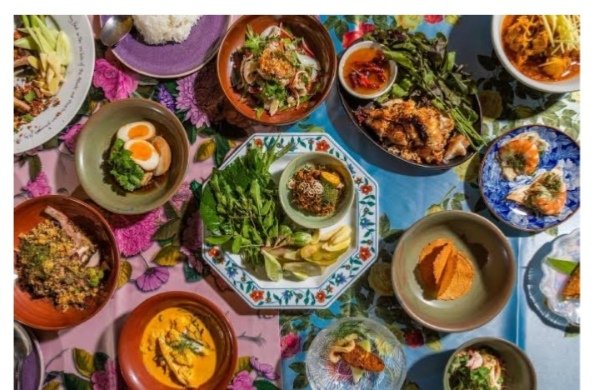Exploring the Authentic Flavors of Pad Thai: A Delightful Thai Dish Served in Bangkok

Introduction:
When it comes to Thai cuisine, one dish that stands out for its exquisite flavors and worldwide popularity is Pad Thai. Originating in Thailand and beloved by locals and tourists alike, Pad Thai has become a symbol of the country's culinary heritage. Served in bustling street food stalls, trendy restaurants, and even fine dining establishments, Pad Thai is a must-try dish when visiting Bangkok. In this article, we delve into the history, ingredients, and preparation of this delicious Thai delicacy that embodies the true essence of Bangkok's vibrant food scene.
A Brief History of Pad Thai:
Pad Thai's origins can be traced back to the late 1930s when the then Prime Minister of Thailand sought to establish a sense of national identity through a unifying dish. Inspired by Chinese stir-fried noodles, he introduced a new recipe that combined local ingredients with international influences. This creation, known as Pad Thai, soon gained popularity and became an integral part of Thai cuisine. Today, it is one of the most iconic and widely consumed dishes in Thailand.
The Flavors and Ingredients:
The key to Pad Thai's delectable taste lies in the harmonious balance of sweet, sour, salty, and umami flavors. The dish typically includes rice noodles stir-fried with a combination of ingredients such as shrimp, chicken, or tofu, complemented by an array of fresh vegetables, including bean sprouts, green onions, and cilantro. The signature sauce, made from tamarind paste, fish sauce, palm sugar, and lime juice, infuses the dish with its distinct tangy and savory notes.
Preparation and Cooking Process:
To create Pad Thai, the rice noodles are soaked until pliable and then stir-fried over high heat in a wok or large pan. The protein of choice, whether shrimp, chicken, or tofu, is added along with garlic, shallots, and often chili for a touch of heat. The dish is then tossed with the Pad Thai sauce, allowing the flavors to meld together. Finally, the fresh vegetables, bean sprouts, and crushed peanuts are sprinkled on top, providing texture, freshness, and a delightful crunch.
Serving and Garnishing:
Pad Thai is traditionally served with a wedge of lime on the side, allowing diners to squeeze the citrus juice over their dish to enhance the flavors. Additionally, condiments like chili flakes, fish sauce, and sugar are often provided, enabling individuals to customize their Pad Thai according to their preferred taste profile. A garnish of fresh cilantro and a sprinkle of crushed peanuts adds the final touch, enhancing both the visual appeal and taste of the dish.
Where to Enjoy Pad Thai in Bangkok:
As the birthplace of Pad Thai, Bangkok offers an abundance of places to savor this iconic dish. From the vibrant street food stalls of Yaowarat (Chinatown) to the upscale restaurants of Sukhumvit, you'll find countless eateries serving up their unique rendition of Pad Thai. Notable establishments like Thip Samai, Pad Thai Thip Samai, and Jay Fai are renowned for their exquisite Pad Thai creations and are must-visit destinations for food enthusiasts.
Conclusion:
When visiting Bangkok, exploring the flavors of Pad Thai is an essential part of immersing yourself in the city's culinary tapestry. This mouthwatering dish, with its blend of sweet, sour, and savory notes, represents the rich cultural heritage and culinary excellence of Thailand. Whether enjoyed from a street food cart or a stylish restaurant, Pad Thai is sure to tantalize your taste buds and leave an indelible impression of Bangkok's vibrant food scene.